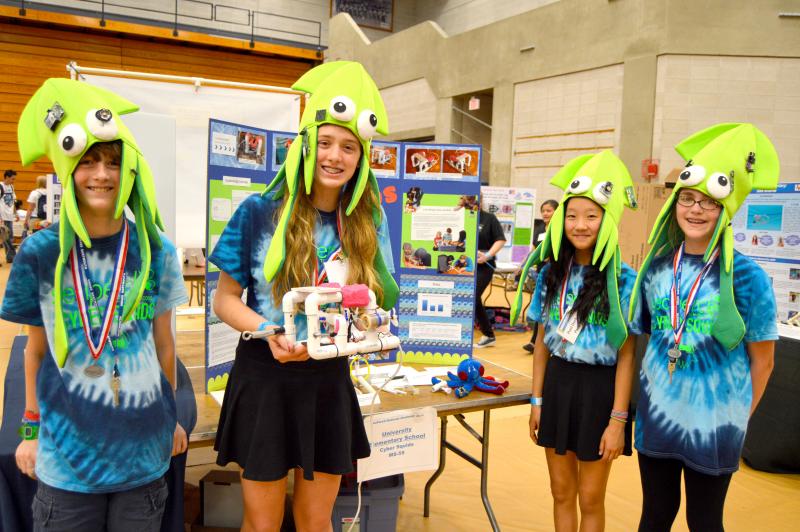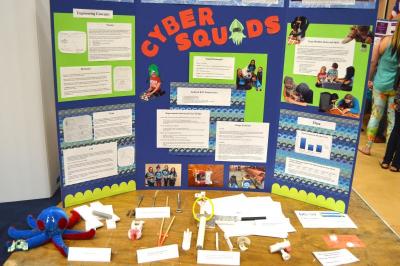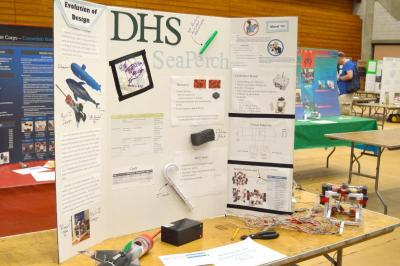Underwater robots teach students about engineering and teamwork

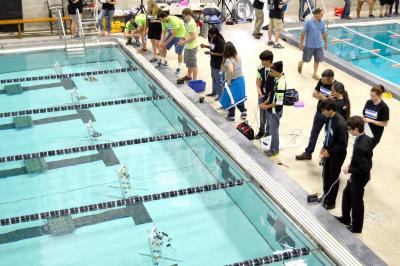

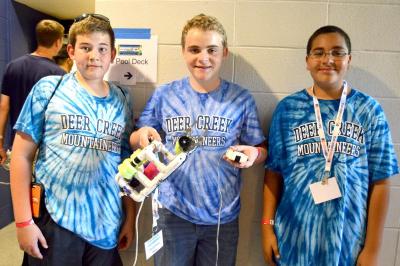
The pools at UMass Dartmouth became the destination for a new kind of swimming competition — one where humans stay dry and the robots dive in.
Middle and high school students from around the country gathered at the Tripp Athletic Center on Saturday for the National SeaPerch Challenge. The event tasked teams to build a remotely operated underwater vehicle capable of completing two distinct obstacle courses and to explain their creation to a panel of judges.
“The SeaPerch program is the entry point into robotics,” said Pamela Smith, director of programs and development at the Association for Unmanned Vehicle Systems International, the group that manages the event. She said her group aims to introduce kids to science, technology, engineering and mathematics.
Teams buy a kit to assemble the robots, which are mostly made from simple components like PVC piping and simple propellers. One team member will maneuver the craft via a control panel while another feeds the tether into the water.
In one pool, the robot must navigate through a series of rings while remaining submerged. At the halfway mark of the course, the robot must breach the surface of the water then return to the obstacle course below. The underwater rings float at different angles, adding to the challenge.
The second event involves finesse. The teams must complete a series of three obstacles within 15 minutes. These obstacles require a probe at the front of the robot to slide rings across the rungs of a ladder, drop objects onto a platform and press into a panel to raise a flag.
“There’s also a poster presentation,” said Smith. “They build their kit and run it through these challenges, but it’s also important that they be able to articulate what they’ve learned.”
Two Dartmouth High School students returned to the SeaPerch Challenge for their second year, competing under the name The Zip Ties.
Daniel McCormack, 18, said his team’s initial design that won the regional competition last November was fast, but hard to drive. He and his teammate, Jacob Oliveira, 17, built a new robot named Roger a week before this year’s national competition.
McCormack said the robot is only as good as the communication between partners.
“It’s about the teamwork between the person on the tether and the person driving. You can’t make certain turns without the tether being fed out. It’s just like sailing,” said McCormack.
While teams competed by the pool in pairs, many of the 140 teams at the competition were composed of bigger groups. The Cyber Squids, who came from Bloomington, Indiana, were a team of four that met twice a week to develop their design.
“We were super excited about going to nationals this year,” said Savannah Bretsch, 12. “We got to learn about things I didn’t know about. I didn’t know how to solder or how to waterproof a motor.”
“This was my first time using a drill. It was really awesome,” added Evelyn Layden, 10.
The members of the Cyber Squids said they learned a variety of engineering concepts along the way, like understanding how vectors would impact the robot’s movement.
“Vectors are forces with direction, and we need this in SeaPerch because there are four vectors that act on the robot,” said Layden. “If the ‘bot was trying to go down, but buoyancy was pulling it up — that would be an example of two vectors going against each other.”
Cody Dickinson, 14, of Littleton, Colorado, said he and his teammates spent Fridays at their local pool testing their design. They made their own obstacle courses out of recycled materials.
“It’s really fun. It builds teamwork skills and creativity to be able to mush everybody’s ideas into one,” said Dickinson.
Kassie Fischer, the mother of one of his teammates, said SeaPerch has meant more to her son, Matt, than simply racing a robot.
“While they’re building it, whoever is the adult in charge is talking to them about careers in engineering and robotics,” said Fischer. “It’s not just a fun project where you glue stuff together and drive it. You learn about how you can do this in real life.”



